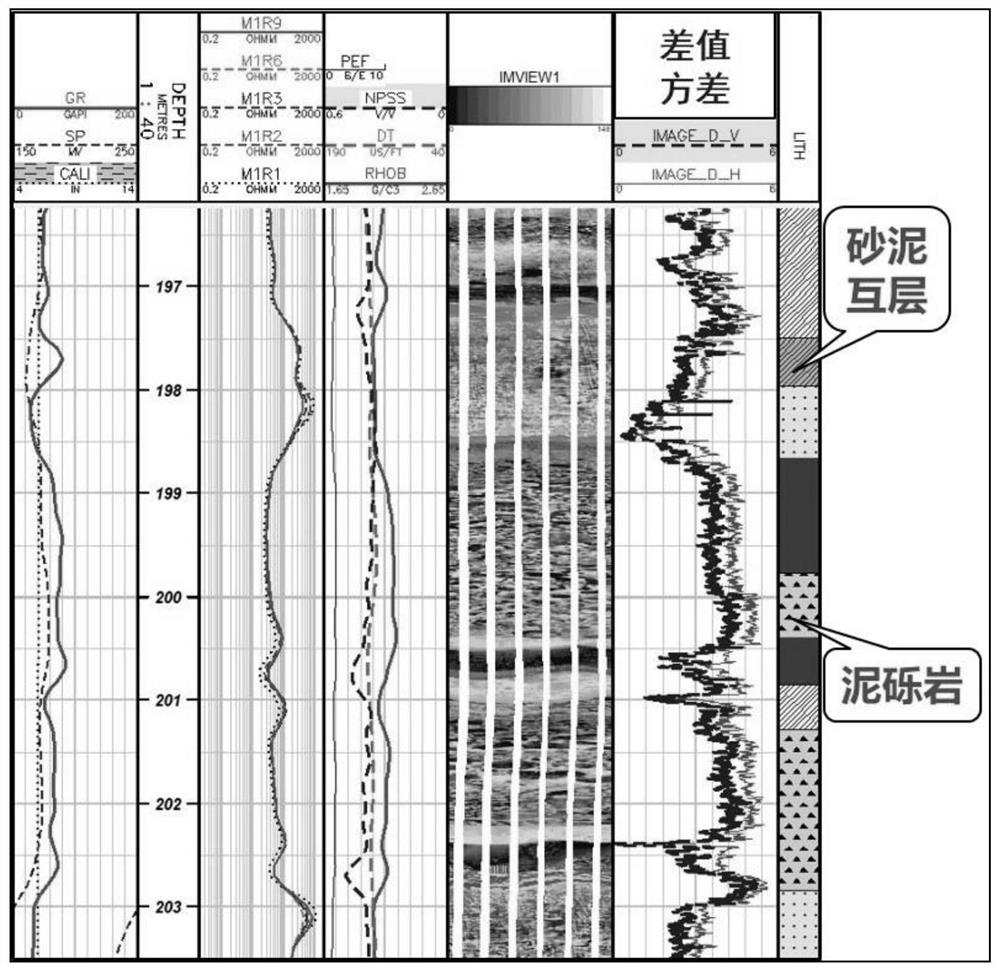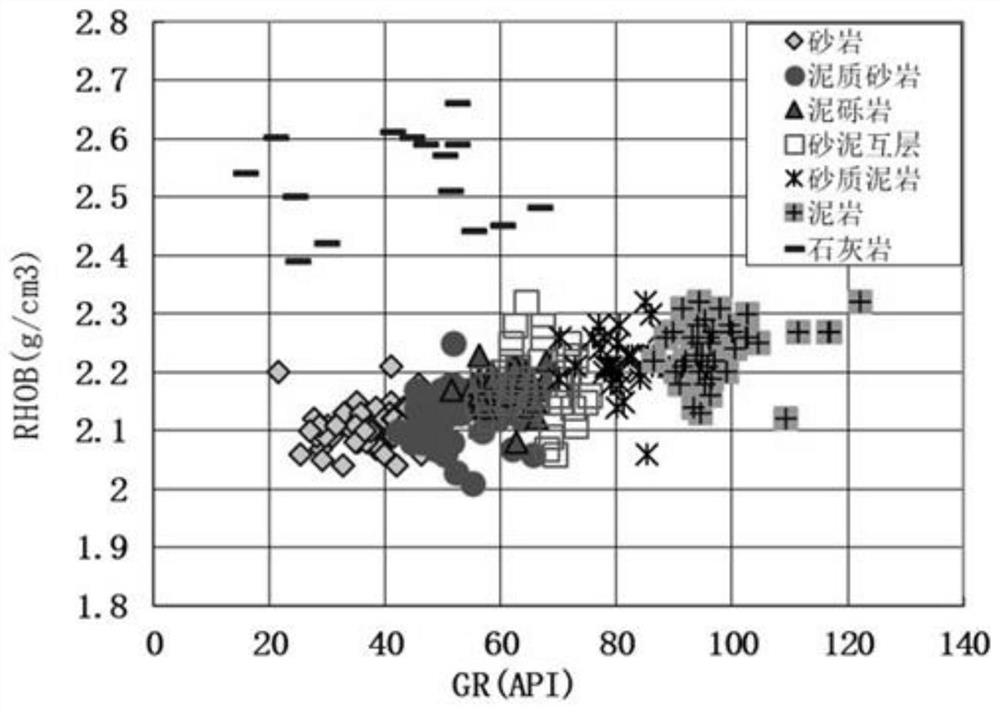Oil sand interlayer quantitative identification method and system based on electric imaging logging
A quantitative identification and electrical imaging technology, applied in radio wave measurement systems, electrical/magnetic detection for logging records, measurement devices, etc. Distinguish the special lithology of mud-conglomerate and other problems to achieve the effect of reducing drilling coring and exploration and development costs
- Summary
- Abstract
- Description
- Claims
- Application Information
AI Technical Summary
Problems solved by technology
Method used
Image
Examples
Embodiment
[0064] Step 1. Electrical imaging logging data preprocessing
[0065] Use the electrical imaging logging processing module of the logging data processing software to preprocess the electrical imaging logging data, including: plate alignment, electrical button alignment, bad electrical button removal and image enhancement, etc., to obtain accurate electrical imaging logging 192 curves (FMI Instruments).
[0066] Step 2. Calculate the variance of vertical and lateral difference based on electrical imaging logging data
[0067] Because the conventional logging response characteristics of mud conglomerate and sand-mud interbed in oil sands are very similar, they cannot be distinguished by conventional logging, but the core and electrical imaging logging images show obvious differences between the two, as shown in figure 1 shown. In order to quantitatively identify these two important lithologies, based on 192 electrical imaging logging curves (FMI instrument), two characteristic...
PUM
 Login to View More
Login to View More Abstract
Description
Claims
Application Information
 Login to View More
Login to View More - R&D
- Intellectual Property
- Life Sciences
- Materials
- Tech Scout
- Unparalleled Data Quality
- Higher Quality Content
- 60% Fewer Hallucinations
Browse by: Latest US Patents, China's latest patents, Technical Efficacy Thesaurus, Application Domain, Technology Topic, Popular Technical Reports.
© 2025 PatSnap. All rights reserved.Legal|Privacy policy|Modern Slavery Act Transparency Statement|Sitemap|About US| Contact US: help@patsnap.com



